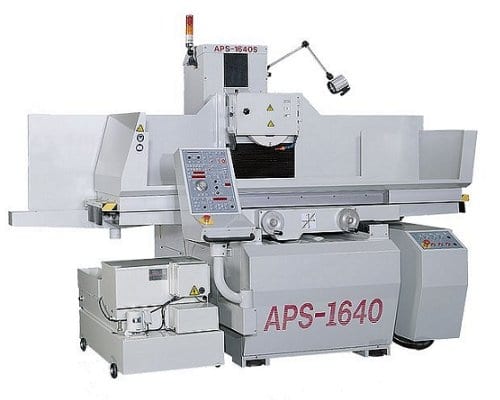Grinding
Our team of highly skilled grinding technicians combines traditional engineering skills with technology to deliver the highest standards of cylindrical and surface grinding to remove excess metal from a workpiece.
Our CMM machines measure ground components for cylindricality, squareness, roundness, flatness and distortion to within a few microns.
Surface Grinding
A rotating abrasive wheel removes material and creates a flat surface, used on different types of steel and other metals. We have 8 Surface Grinders, up to 1000 x 500 x 400mm capacity
Cylindrical Grinding
This grinds cylindrical surfaces as well as the shoulders of the material with the workpiece mounted on centres and rotated. We have 9 cylindrical grinders used on shafts, punches and camshafts.

Surface Grinding Frequently Asked Questions
What is the difference between surface grinding and cylindrical grinding?
Surface grinding and cylindrical grinding are two common grinding methods used in manufacturing processes. Here are the main differences between the two:
1. Object shape: Surface grinding is used to grind flat surfaces, such as metal sheets, plates, or any other material with a flat geometry. Cylindrical grinding, on the other hand, is used to grind cylindrical or round objects, such as rods, shafts, or cylindrical workpieces.
2. Grinding wheel shape: In surface grinding, a horizontal spindle with a grinding wheel is used, which is generally a flat or cup-shaped wheel. In cylindrical grinding, a cylindrical grinding wheel is used, which has a cylindrical shape.
3. Grinding operation: Surface grinding involves the grinding wheel moving across the surface of the workpiece in a linear fashion, removing material from the surface to achieve the desired shape or finish. Cylindrical grinding, on the other hand, involves the rotation of the workpiece while the grinding wheel moves back and forth along the length of the workpiece to remove material and create a cylindrical shape.
4. Workpiece holding: In surface grinding, the workpiece is typically held in a magnetic chuck or a vice, ensuring it remains stationary during the grinding process. In cylindrical grinding, the workpiece is typically held between centers or in a chuck, allowing it to rotate during the grinding process.
5. Applications: Surface grinding is commonly used for finishing flat surfaces, removing stock material, or achieving high surface quality and accuracy. Cylindrical grinding is often used for machining cylindrical or round objects to achieve precise dimensions, roundness, or surface finishes.